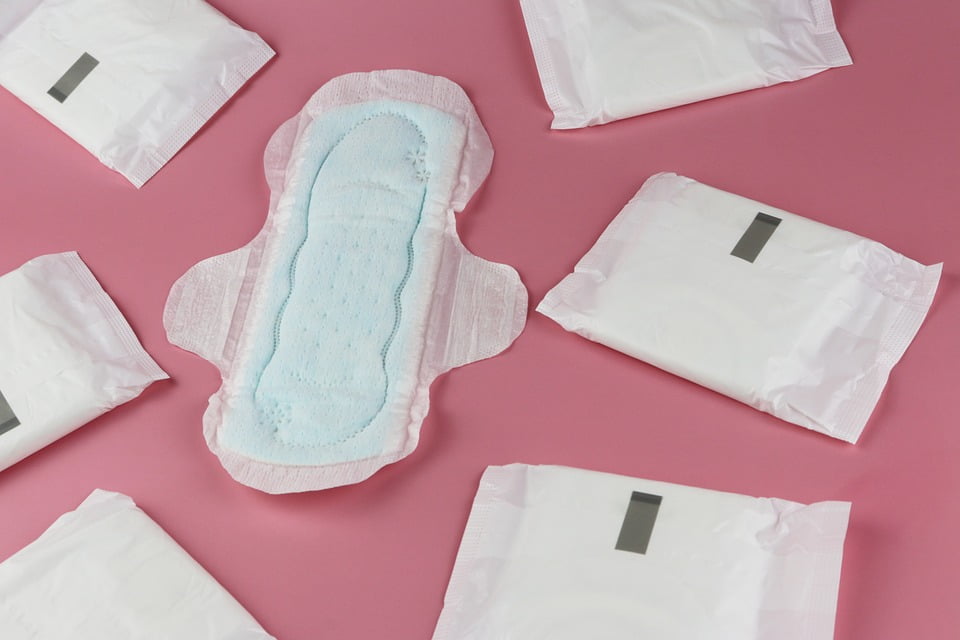Period blood: it’s not something many people want to talk about. Taboos around menstruation and menstrual blood have been around for centuries. Even today, despite menstrual blood being featured in contemporary art, this basic part of many women’s identities still isn’t something that can be easily mentioned in public.
Menstruation is generally seen as something to be managed and contained – with period leaks considered a source of embarrassment. This is despite campaigns aimed to help younger people feel more able to talk about menstruation.
For many women, the time of the month means relying on tampons, pads or a menstrual cup to collect the two to three tablespoons of blood that are lost over the four to five days of their period.
But a 2019 study of how women around the world manage menstruation showed that many still use leaves, sheep’s wool, newspaper, grass or even cow dung, as an absorbent substance.
A 2016 report from Unesco found that 10% of young women in Africa did not attend school during their periods. Indeed, one way of avoiding leaks is simply not to go outside the home when menstruating, which is why menstruation still has important consequences for women’s education.
Periods of the past
It’s likely that women in the past had fewer periods, with lighter bleeding, not only because they spent more of their lives pregnant but also because their diet was poor.
Wikipedia
Yet medical texts going back to ancient Greece seem to propose that the ideal bleed should be heavy. This was due to the belief that menstruation happened because women’s bodies had a more spongy texture compared to men’s bodies, so their flesh absorbed more fluid from what they ate and drank. Blood that did not come out was even thought to cause mental illness.
Medical texts up to the 19th century still reflected these ideas from ancient Greece, but there is evidence from early modern Europe that men were comfortable discussing menstruation and. The 17th-century man of letters Samuel Pepys even mentioned his wife’s menstrual cycle in his diary.
As for dealing with the bleeding, historian Sara Read has concluded that at this time most women just bled on their clothes. Rags placed between the thighs or attached to clothing were also used.
Wikipedia
It was in the 19th century that the market for special menstrual clothing was developed: from belts and pads to the “sanitary apron” which was worn over the buttocks to stop leakage onto clothing when sitting down. Until disposable cotton pads were developed in the late 1890s, pads still needed to be washed out and dried (though reusable pads have recently made a comeback).
From the late 1960s, the use of a sticky strip meant that pads could be secured in the underwear rather than needing to be fixed to a special belt.
Return to reuse
Historian Lara Freidenfelds has shown that in the US by the 20th century, menstruation was increasingly seen as a normal part of life – no longer requiring a few days of rest as was previously the case. And commercially produced products came to be valued as a status symbol.
Wikipedia
In the 1930s the first tampons came onto the market. They were described as “internal sanitary napkins”. Menstrual cups made from rubber also date back to the 1930s – although they have largely been replaced these days by silicone cups which come in a wide range of sizes. The risk of leakage with a cup of the correct dimensions appears to be lower than with a pad or tampon.
Modern menstrual products damage the environment. Tampon applicators and wrappers are made of plastic and pads contain it too. There is also an increased awareness of the risks of chemicals, such as dioxins, used in both tampons and pads. This has boosted the market for products containing natural materials.
Disposable or reusable menstrual discs are also available – basically, a round silicone disc that collects blood. And period pants, invented in 2017, are sold as “better for the planet”.
Rather than marketing commercial products in the world’s poorest countries, charities such as ActionAid run training sessions on making your own pads. Women in wealthier countries have been surprised at how comfortable these are to wear.
Today’s promotion of reusable pads or period pants is a return to a past way of dealing with menstruation – though it’s clearly now much easier for most women to wash and dry these items.
Their use suggests our attitude to menstrual blood may be shifting. Indeed, seeing menstrual products as “waste” that needs to be hidden and disposed of “hygienically” doesn’t go with the idea of washing out your pads and hanging them up to dry on the line.

